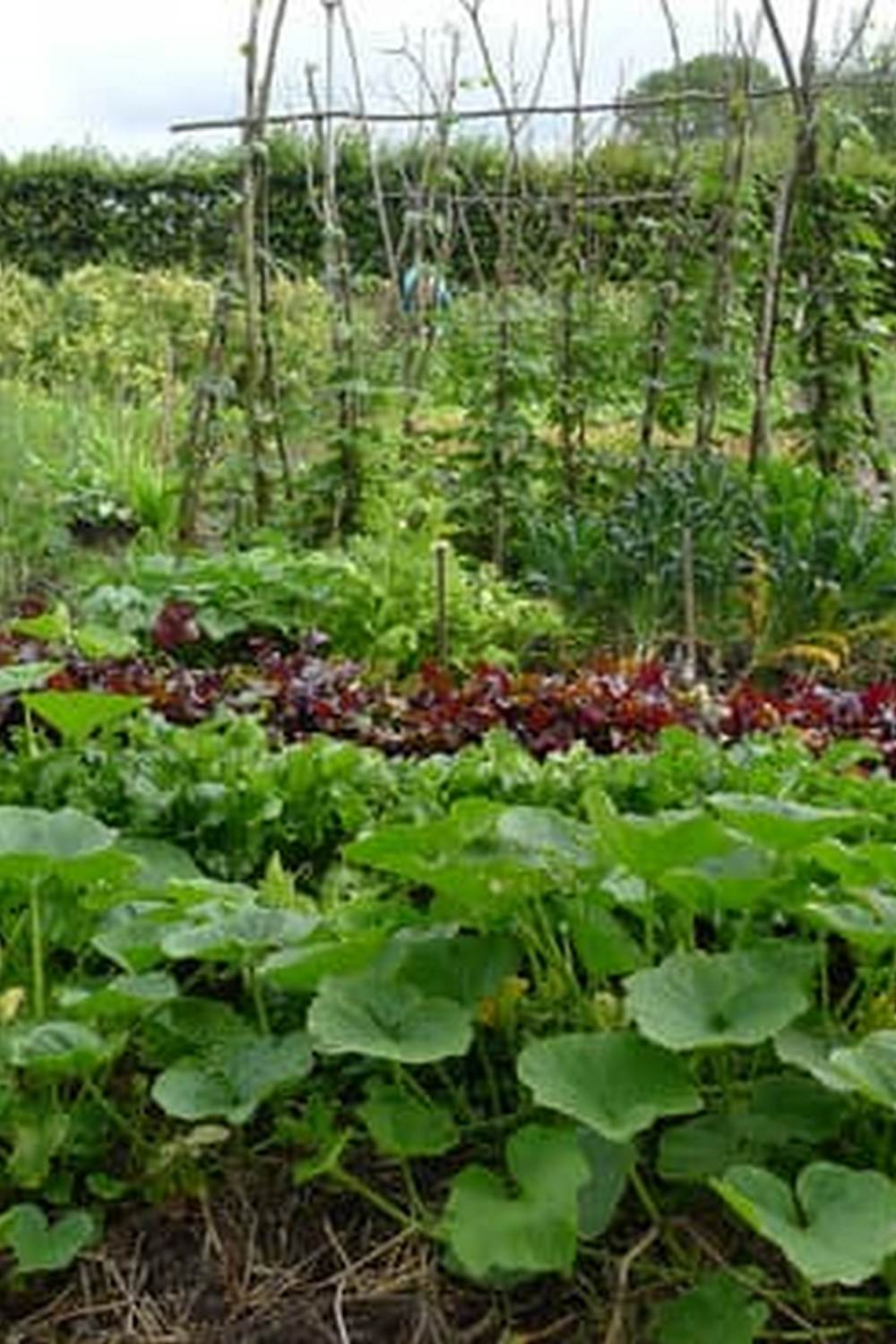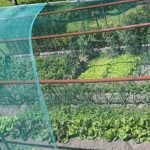Are you looking for a way to maximize space and productivity in your vegetable garden? Consider the benefits of an 8 by 16 raised enclosed vegetable garden. This innovative gardening method offers a host of advantages, from pest control to increased yield and easier maintenance.
One of the primary benefits of a raised enclosed vegetable garden is the ability to control pests and protect your plants from diseases. By enclosing your garden, you can effectively keep out unwanted insects and animals that may damage or destroy your crops. Additionally, this type of garden provides a barrier against common plant diseases, helping to ensure the health and vitality of your vegetables.
In addition to pest and disease control, planning and designing an 8 by 16 raised enclosed garden allows you to optimize space and productivity. With careful consideration given to layout and plant selection, you can significantly increase the yield of your garden while making maintenance more efficient. In the following sections, we will explore how to plan, design, build, maintain, and enjoy the fruits of your enclosed vegetable garden for optimal success.
Planning and Designing Your 8 by 16 Raised Enclosed Garden
When planning and designing your 8 by 16 raised enclosed vegetable garden, there are several factors to consider to ensure a successful and productive gardening experience. One of the key benefits of a raised enclosed garden is the ability to control the environment, which allows for optimal growing conditions. Additionally, the raised bed design provides better drainage and prevents soil compaction, leading to healthier plants and higher yields.
Choosing the Right Location
The first step in planning your enclosed garden is selecting the right location. Choose a spot that receives ample sunlight and has good air circulation. It’s also important to consider convenience and accessibility when deciding on a location for your 8 by 16 garden. You’ll want easy access for maintenance and harvesting, so choose a spot that is easily accessible from all sides.
Designing Your Garden Layout
Before building the enclosure, carefully plan out the layout of your vegetable garden. Consider companion planting and crop rotation to optimize space utilization and minimize pest infestations. Dividing your garden into sections can help with organization and make it easier to manage different types of vegetables. When designing the layout, think about where you want pathways, trellises, and support structures for climbing plants.
Materials and Construction
When it comes to building the enclosure for your raised garden, there are various materials to consider such as wood, metal or PVC pipes. Each material has its own benefits and drawbacks in terms of durability, cost, and aesthetics. Think about what will work best for your specific needs and budget before starting construction on your enclosed garden.
With careful planning and thoughtful design choices, you can create a functional and sustainable 8 by 16 raised enclosed vegetable garden that provides an abundance of fresh produce throughout the growing season.
Choosing the Right Vegetables for Your Enclosed Garden
When it comes to choosing the right vegetables for your 8 by 16 raised enclosed garden, there are a few key factors to consider. Firstly, it is important to select vegetables that are well-suited for growing in a confined space, as this will ensure that you are able to optimize the use of the available area.
Additionally, taking into account the specific conditions within an enclosed garden, such as limited sunlight and controlled temperatures, is crucial for selecting vegetables that will thrive in this environment.
One of the best types of vegetables to grow in an enclosed garden are leafy greens, such as lettuce, spinach, and kale. These vegetables tend to do well in partially shaded areas and can be grown close together, making them an ideal choice for maximizing space in a raised enclosure. Other compact options include radishes, carrots, and green onions, all of which can be planted in succession or in small bunches to make the most of the available space.
Additionally, it is important to consider the vertical space within your enclosed garden when selecting vegetables. Crops such as cucumbers, pole beans, and tomatoes can be trained to grow upwards using trellises or other support structures.
This not only allows you to increase the yield from your garden but also makes efficient use of the limited ground space available in an 8 by 16 raised enclosure. By carefully choosing a variety of suitable vegetables for your enclosed garden, you can ensure a bountiful harvest and make the most of your gardening efforts.
Building and Installing the Enclosure for Your Garden
Materials Needed
Before building your enclosed garden, it’s important to gather all the necessary materials. You will need wood, wire mesh, screws, hinges, and a latch for the gate. Consider using cedar or redwood for the wood as they are resistant to rot and pests. The wire mesh should be fine enough to keep small pests out but still allow for adequate airflow.
Constructing the Frame
Start by constructing a frame for your garden enclosure using the wood. The size of your enclosure will be 8 by 16 feet, so ensure that you measure and cut the wood accordingly. Once you have cut the pieces for the frame, assemble them securely using screws. Make sure that the corners are square and that the frame is sturdy.
Installing the Wire Mesh
After constructing the frame, it’s time to install the wire mesh around it. Use a staple gun to secure the mesh to the frame, ensuring that there are no gaps where pests could enter. It’s crucial to pay attention to detail during this step as any openings in the mesh could compromise the effectiveness of your enclosed garden.
By following these steps and paying attention to detail, you can ensure that your 8 by 16 raised enclosed vegetable garden is properly enclosed and protected from pests while still allowing ample sunlight and airflow for your plants to thrive.
Soil and Maintenance Tips for a Successful Enclosed Garden
When it comes to soil and maintenance, a raised enclosed vegetable garden offers several advantages. The raised beds provide better drainage and aeration for the plants, while the enclosure helps to keep the soil protected from erosion and compaction. Here are some tips to ensure that your enclosed garden is successful in producing healthy and abundant vegetables:
1. Soil Preparation: Before planting, it’s important to prepare the soil in your 8 by 16 raised enclosed vegetable garden. Mix in organic matter such as compost or aged manure to improve the soil structure and provide essential nutrients for plant growth.
2. Irrigation: Proper watering is crucial for the success of your enclosed garden. Consider installing a drip irrigation system or soaker hoses to deliver water directly to the root zone of the plants, reducing water waste and minimizing weed growth.
3. Maintenance: Regular maintenance tasks such as weeding, pruning, and removing spent plants are essential for keeping your enclosed garden in top condition. Utilize mulch to help suppress weeds and retain moisture in the soil, reducing the need for frequent watering.
By following these soil preparation and maintenance tips, you can ensure that your 8 by 16 raised enclosed vegetable garden thrives throughout the growing season, providing you with a bountiful harvest of fresh, homegrown produce.
Maximizing Space and Yield in Your 8 by 16 Garden
When working with limited space in your 8 by 16 raised enclosed vegetable garden, it is important to make the most of every square inch. One way to maximize space is by utilizing vertical gardening techniques. This can be achieved by using trellises, stakes, or cages for vining plants such as tomatoes, cucumbers, and peas. By training these plants to grow upwards, you free up valuable ground space for other crops.
Another way to optimize your garden’s yield is by practicing intercropping. This method involves planting different types of vegetables in close proximity to one another. For example, you could plant quick-growing lettuce or radishes between rows of slower-growing plants like peppers or eggplants. This not only maximizes space but also helps suppress weeds and makes the most efficient use of the soil.
Additionally, consider succession planting in your enclosed garden. Instead of waiting for one crop to finish before planting another, stagger your plantings so that as soon as one crop is harvested, another can take its place. This constant rotation ensures that your garden remains productive throughout the growing season.
| Maximizing Space Techniques | Benefits |
|---|---|
| Vertical Gardening | Frees up ground space; Utilizes unused growing space |
| Intercropping | Optimizes soil use; Suppresses weeds |
| Succession Planting | Ensures continuous productivity; Maximizes growing season |
Pest Control and Disease Prevention in Enclosed Gardens
When it comes to maintaining a successful 8 by 16 raised enclosed vegetable garden, pest control and disease prevention are essential components. By taking proactive measures to protect your plants, you can ensure a bountiful harvest and healthy produce for your enjoyment. Here are some tips and strategies for keeping pests at bay and preventing diseases in your enclosed garden:
- Regular Inspection: Make it a habit to regularly inspect your plants for any signs of pests or diseases. Look for holes in the leaves, discoloration, wilting, or any unusual growth patterns. Catching potential issues early can prevent them from spreading throughout the entire garden.
- Natural Predators: Introducing natural predators such as ladybugs, lacewings, or predatory mites can help keep pest populations in check. These beneficial insects can prey on common garden pests like aphids, spider mites, and whiteflies without causing harm to your plants.
- Companion Planting: Implementing companion planting techniques can help repel pests and attract beneficial insects. For example, planting marigolds around the perimeter of your enclosed garden can deter nematodes, while also adding a pop of color to your garden space.
In addition to pest control measures, disease prevention is another crucial aspect of maintaining a healthy enclosed vegetable garden. Here are some strategies for preventing diseases in your garden:
- Proper Watering: Avoid overhead watering which can promote the spread of fungal diseases. Instead, water your plants at the base to keep foliage dry and minimize the risk of infections.
- Good Air Circulation: Adequate airflow around plants can help prevent the buildup of moisture and reduce the risk of fungal diseases. Be mindful of spacing when planting to allow for proper ventilation between plants.
- Sanitation Practices: Regularly remove any diseased or damaged plant material from your garden to prevent the spread of infections. Clean gardening tools between uses and avoid working in wet conditions to minimize the risk of spreading diseases from one plant to another.
By implementing these pest control and disease prevention strategies in your 8 by 16 raised enclosed vegetable garden, you can promote a thriving environment for your plants while enjoying a successful harvest.
Harvesting and Enjoying the Fruits of Your Enclosed Garden
In conclusion, 8 by 16 raised enclosed vegetable gardens offer numerous benefits for gardeners of all levels. From efficient space utilization to pest control and disease prevention, these enclosed gardens provide a controlled environment for growing a variety of vegetables. With the proper planning and design, as well as careful consideration of the types of vegetables to plant, gardeners can enjoy bountiful harvests from their enclosed gardens.
Once the enclosure is built and installed, maintaining the soil and overall upkeep of the garden is crucial for its success. By following soil and maintenance tips, gardeners can ensure that their vegetables thrive throughout the growing season. Additionally, maximizing space and yield within an 8 by 16 enclosed garden allows for a greater variety of produce to be grown, providing an abundance of fresh vegetables for enjoying at home.
Finally, through effective pest control and disease prevention methods, gardeners can protect their crops and ensure a successful harvest. By staying vigilant with regular inspection and implementing preventive measures, such as proper spacing and companion planting, gardeners can minimize potential issues in their enclosed gardens.
Ultimately, harvesting the fruits of one’s labor from an 8 by 16 raised enclosed vegetable garden is a rewarding experience that offers not only delicious produce but also a sense of accomplishment in creating a thriving garden.
Frequently Asked Questions
What Is a Good Size for a Raised Vegetable Garden?
The ideal size for a raised vegetable garden depends on factors like available space, the number of vegetables you want to grow, and your physical abilities. Generally, a 4×4 foot or 4×8 foot bed is a good starting point.
What Is the Best Layout for a Raised Bed Vegetable Garden?
The best layout for a raised bed vegetable garden is typically based on accessibility and sunlight exposure. It’s often recommended to orient the beds north to south to ensure even sun exposure and make tending the garden easier.
How Close Can You Plant Vegetables in a Raised Bed?
In a raised bed, you can plant vegetables closer together than in traditional gardens due to the concentrated soil and better drainage. However, overcrowding can lead to poor growth and disease, so it’s important to follow spacing recommendations for each type of vegetable.

If you’re looking to get into vegetable gardening, or are just looking for some tips on how to make your current garden better, then you’ve come to the right place! My name is Ethel and I have been gardening for years. In this blog, I’m going to share with you some of my best tips on how to create a successful vegetable garden.





